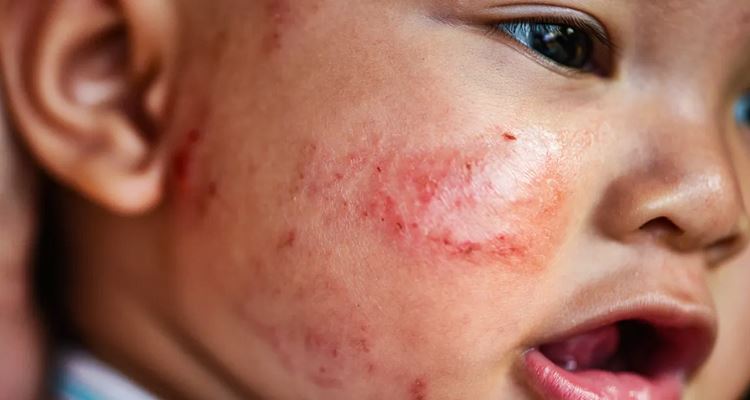These are the different types of eczema. Check it out below!
ECZEMA – Anyone can be affected by eczema and here are the seven (7) types of this skin condition that you should know.
This skin condition is characterized by itchy, red, dry, scaly, hyperpigmentation, or thickened skin. This is common in children but adults may also get affected by this.

It is sometimes called atopic eczema but really, this skin condition has its various types and each type has its own set of symptoms. Some types can even cause blisters but one thing people should understand as well is that this condition is not contagious.
There are certain factors that can trigger it including foods like nuts and dairy and environmental factors like smoke, pollen, soaps, and fragrances.
Here are the various types of this according to National Eczema Org’s article:
- Atopic dermatitis
This is the most common that starts in childhood. And as the person grows old, it will just go milder and eventually go away. It may affect the skin on the face, hands, feet, inner elbows, and back of the knees.
Soap, rough clothing, and household chemicals may trigger this. Your genes, having dry skin, immune system problems, and others may likely cause this as well.
- Contact dermatitis
It can be determined in two types: allergic (when the immune system reacts to an irritant) and irritant (when the skin reacts to a chemical or other substances).
Some of its causes are detergents, bleach, jewelry, latex, nickel, paint, poison ivy and other poisonous plants, skin care products including makeup, soaps, perfumes, solvents, and tobacco smoke.
- Neurodermatitis
This type can affect the back, sides or back of the neck, scalp, wrists, ankles, and inside or behind the ear.
This happens more to women than men. Its symptoms are characterized by blisters filled with fluid that appears in the toes, palms, and soles of your feet.
It may itch and hurt and can cause the skin to be scaly, flaky, and cracking.
- Nummular eczema
They appear as coin-shaped red marks on the legs, back of the hands, forearms, lower back, and hips.
The triggers of this type are cold and dry air, being exposed to chemicals like formaldehyde, and exposure to metals like nickel.
- Seborrheic dermatitis
This is better known as dandruff. For adults affected by this, it may appear in the eyebrows, sides of the nose, behind the ears, groin, and center of the chest.
Shampoo with salicylic acid, selenium sulfide, zinc pyrithione, or coal tar may help treat this. You may also use antifungal treatments and steroid lotions.
- Stasis dermatitis
This happens when there’s a problem in your veins, commonly in the common legs. This is common in people aging 50 and up.
Other conditions that may cause this include high blood pressure, varicose veins, being overweight, congestive heart failure, kidney failure, blood clots in the legs, and others.
READ ALSO:
- Brisk Walking For Weight Loss – Is Walking Enough To Lose Weight?
- Narcolepsy – What Are The Signs and Symptoms Of Narcolepsy?
What can you say about this? Let us know!

